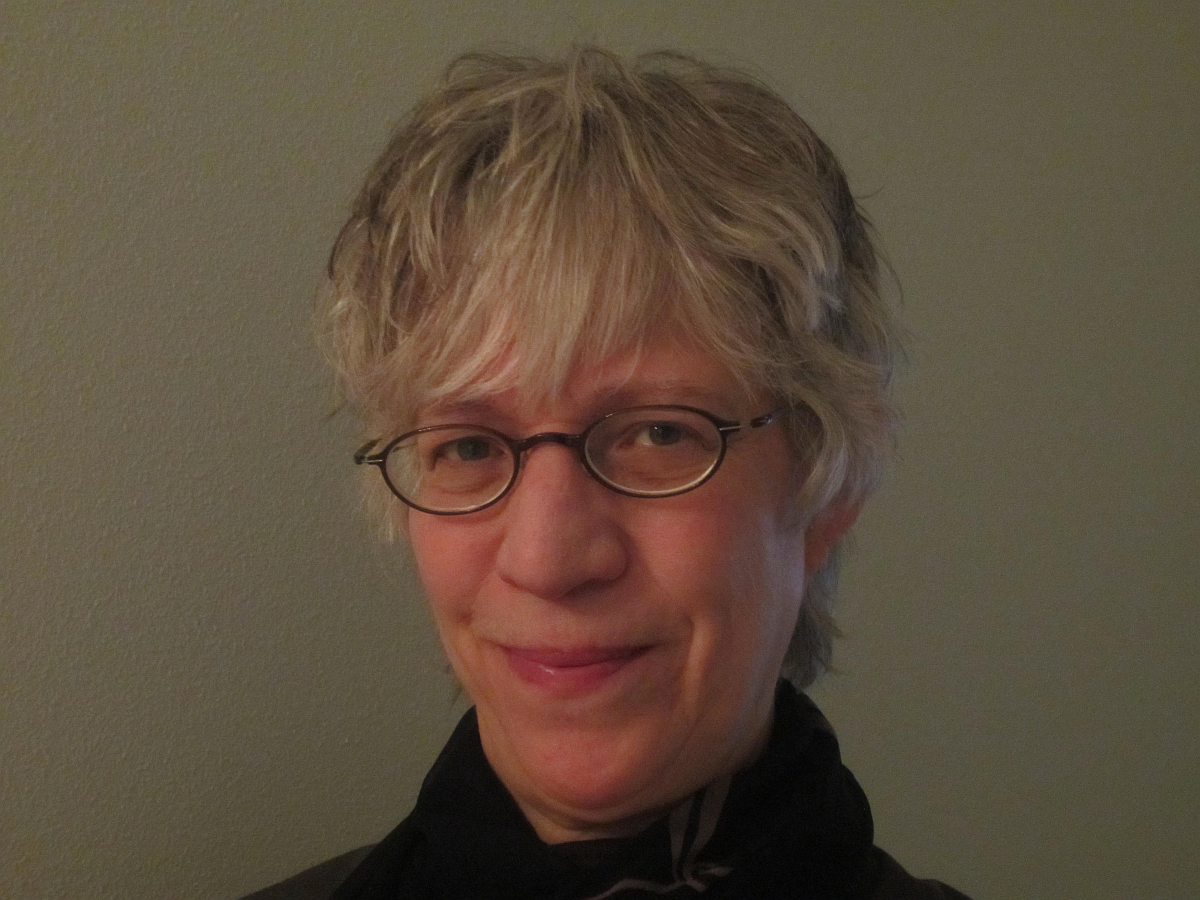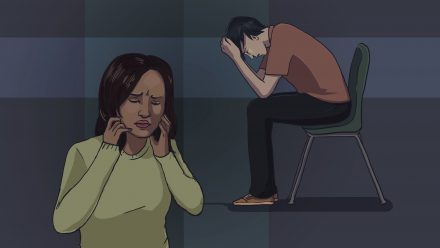Abortion rights, women of color, and LGBTQI+ people are under attack. Pledge to join us in fighting for gender justice.
Why We Need Title IX to Let Her Learn: A Parent’s Perspective

Esther Warkov is the mother of a student survivor of sexual assault, and the founder of Stop Sexual Assault In Schools (SSAIS), an organization dedicated to educating K-12 students, families, and schools about students’ right to an equal education free from sexual harassment. Content note: the following contains general references to sexual harassment, assault, and rape.
Sabrina Joy Stevens: How long have you been an advocate on this issue?
Esther Warkov: Almost five years, with the last three in the public eye. Our advocacy began the day after our daughter was raped on a high school field trip in November 2012, and advocacy became a full-time job. Our family was thrown into chaos for months, just attending to the immediate trauma from the rape itself. At the same time, we struggled to piece together our daughter’s education. We were constantly stymied by school staff who gave us contradictory information and were obviously unaware of how to handle the situation. (We share correspondence with the district online so that families can understand how schools use certain tactics to shut down complaints.)
Eventually we moved to another state to give our daughter a new start, but the trauma again derailed her education. There, we continued our advocacy by filing a sexual harassment complaint at the district level, but the legal department convinced the school board to side with the superintendent, who claimed he couldn’t even determine that she’d been sexually assaulted (despite medical staff stating she had injuries consistent with rape in the emergency room)!
Next, in the spring of 2014 we filed a Title IX complaint that brought a U.S. Department of Education Office for Civil Rights (OCR) investigation to the district. Although we had moved to another state, we organized demonstrations, and our cause received extensive media attention. Two years ago we launched our nonprofit, Stop Sexual Assault in Schools. Now, almost five years after the rape, it’s clear that all of this could have been prevented had the school followed its own chaperoning policies and Title IX.
SJS: How did you find out about your and your daughter’s Title IX rights after her classmate raped her?
EW: For months after the assault, we requested that the school principal and superintendent explain why our daughter was raped on a field trip. Instead of answering, all of our communications were funneled to the legal department, which was focused on mitigating liability for the assault. Because we didn’t receive any explanation, we escalated our complaint to the state’s Equity and Civil Rights Office at the Office of the Superintendent of Public Instruction; they informed us about Title IX!
Instead of learning about our daughter’s rights five months later, the school should have immediately engaged the Title IX Coordinator to provide services, investigate, and ensure that her education could proceed free from harassment. Five months after the assault was far too late to conduct the required “prompt and equitable” Title IX investigation! By then, other students and staff had created “alternative facts.” At our insistence, the district finally investigated, but the investigation was far from objective.

SJS: What surprised/angered/frustrated you most when dealing with the school and school district afterward?
EW: The school district dehumanized our family. Instead of saying, “Something went wrong here. We’ll get to the bottom of it,” the district treated us like we were a problem they wanted to go away. So the school district adopted an adversarial stance towards our family. I was horrified and infuriated by their lies. When we confronted the principal about inconsistent statements he made within the span of two days, he shut down communication. And the lying continued. To cover up the negligence that led to the assault as well as their failure to investigate, the district recanted or distorted the facts, provided a constant stream of conflicting information, and denied the impact of the assault. For example, the district wondered why our daughter would need accommodations in a new school, as if the PTSD from being raped would vanish the moment she transferred!
To further dismiss the rape, the district’s lawyer wrote that having sex on a field trip doesn’t mean the chaperoning failed. Outraged, we wrote to the superintendent and school board, but both had been silenced by the legal department. When confronted about the district’s failure to investigate, the district’s attorney presented absurd and contradictory excuses that were exposed by the television media. The district then misled the TV audience, saying that the U.S. Department of Education advised districts to delay their own investigations if law enforcement is involved—a blatant contradiction of Title IX and Title IX guidance!
The district demonstrated complete ignorance of Title IX, privileged the perpetrator’s account of events (even though he had previously been disciplined for sexual misconduct when he was in middle school), and even adopted an advocacy role for him. They performed a belated and self-serving investigation, distorted our complaint against the teachers to exonerate them, repeatedly violated our daughter’s educational privacy rights (guaranteed by Family Educational Records Privacy Act or FERPA) by revealing her personal information in public documents, etc. The list goes on and on.
Like other parents in our situation, we were horrified that a school district would treat us this way. Eventually we learned that there’s a term for our experience: institutional betrayal. It’s no wonder that victims speak of being “revictimized” by their school; many characterize their treatment by the school as being worse than the initial assault. We learned that schools frequently do their utmost to intimidate and silence families. But we refused to be intimidated or silenced!
SJS: What can educators, administrators, and other school employees do better to address sexual assault when it happens?
EW: Schools must put students’ rights first—not the school’s . The school must have a clear understanding of Title IX and implement the required steps (for example, conducting a prompt and equitable investigation, taking steps to prevent retaliation, offering services and accommodations to the victim, etc.). School officials must also approach the victim and family with respect and compassion. Because so few schools seem to know how to properly handle complaints, we created a video scenario showing a Title IX Coordinator taking a parent’s complaint.
Schools—and the public—must understand that Title IX investigations are not about determining whether a crime occurred. Title IX investigations are about whether the school’s sexual misconduct policy and the victim’s right to an education free from sexual harassment were violated. The school must begin its investigation without delay, and not wait for law enforcement to complete its investigation. The school should keep the family updated and promptly provide the investigation report. During investigations, the school must implement the required interim measures such as providing protections for the victim. For example, the school must make accommodations that prioritize the victim’s class schedule and extracurricular activities, not the perpetrator’s.
Many schools wrongly believe that if the perpetrator isn’t found to have committed misconduct, they have no further responsibility. While many investigations—for a variety of reasons—will result in a finding of “no responsibility” or “inconclusive,” that doesn’t mean the victim wasn’t harassed or assaulted. In such cases, the school should still accommodate the victim and check in periodically to make sure the student feels safe. Although it can become tricky when there’s no finding against the perpetrator, especially if the victim wants the perpetrator’s class changed, the school should still do its best to reduce the impact on the reporting party and accommodate any reasonable requests.

SJS: What can school personnel do better to prevent sexual assault in the first place?
EW: Schools must take the initiative to eliminate sexual harassment and assault, first by acknowledging that these problems exist. The next step is to involve the entire school community in the solution. A properly trained Title IX Coordinator is key to both proactively preventing sexual harassment and assault, and addressing it when it happens. The Coordinator’s contact information should be publicly available to the entire school community.
While schools may have a Title IX Coordinator, it’s more often than not in name only; that person often has another staff role and is unfamiliar with the Coordinator’s responsibilities. School districts should also provide Title IX training for all staff and training on a trauma-informed approach to victims so students will be encouraged to report.
Schools should create effective sexual harassment policies (which include cyber-harassment, LGBTQ harassment, definitions of harassment, gender stereotypes, etc.). Schools must also understand their duty to address dating violence and offsite harassment or assault. Throughout the school year, students and parents should be informed, through many forms of communication, of the school’s obligation to address sexual harassment and assault.
When a school is committed to ending sexual harassment and assault, it will implement a sustained effort to monitor and improve the school climate. The school can begin with a climate survey to determine what staff and students understand about sexual harassment and assault. The school should support gender equity groups and anti-harassment campaigns using posters, fact sheets, and other tools, offer bystander intervention training, discuss gender stereotypes and healthy masculinity, invite experts and the Title IX Coordinator to make presentations to students and the parent teacher organization, encourage articles in the school paper, etc.
Unfortunately, many schools don’t want to admit or report that they have a problem with sexual harassment and assault, which makes it nearly impossible for them to proactively address these issues.
But it’s the law! To convince skeptical parents or colleagues, they can say, “If we ever want to get rid of sexual harassment in college and the workplace, we have to start when students are young.”
Communities must demand that K-12 schools follow Title IX. School leaders must be reminded that if they don’t, they could suffer painful financial consequences, bad press, a loss of public support, and more—all while failing to provide students with the healthy and fair educational environment they deserve.
SJS: What can students do to make a difference on this issue?
This is where it gets fun. Students (and their allies) can begin by watching Sexual Harassment: Not in Our School! and implementing the many activities in SSAIS’ Action Guide. The video models how a new high school gender equality club goes about making change. Or they can start with a video excerpt that shows students brainstorming ideas. The full video also includes suggestions from a sexual assault expert and ways to introduce the concept of healthy masculinity into the school environment. Students can also engage parents and community organizations in the process too. I recommend the resources at SSAIS.org/video and the SSAIS Activism Toolkit. Anyone can contact SSAIS to ask questions, share their projects, volunteer, or get support.
For more resources from SSAIS, click the links in this interview, visit this curated collection of additional resources, and visit their website, stopsexualassaultinschools.org





